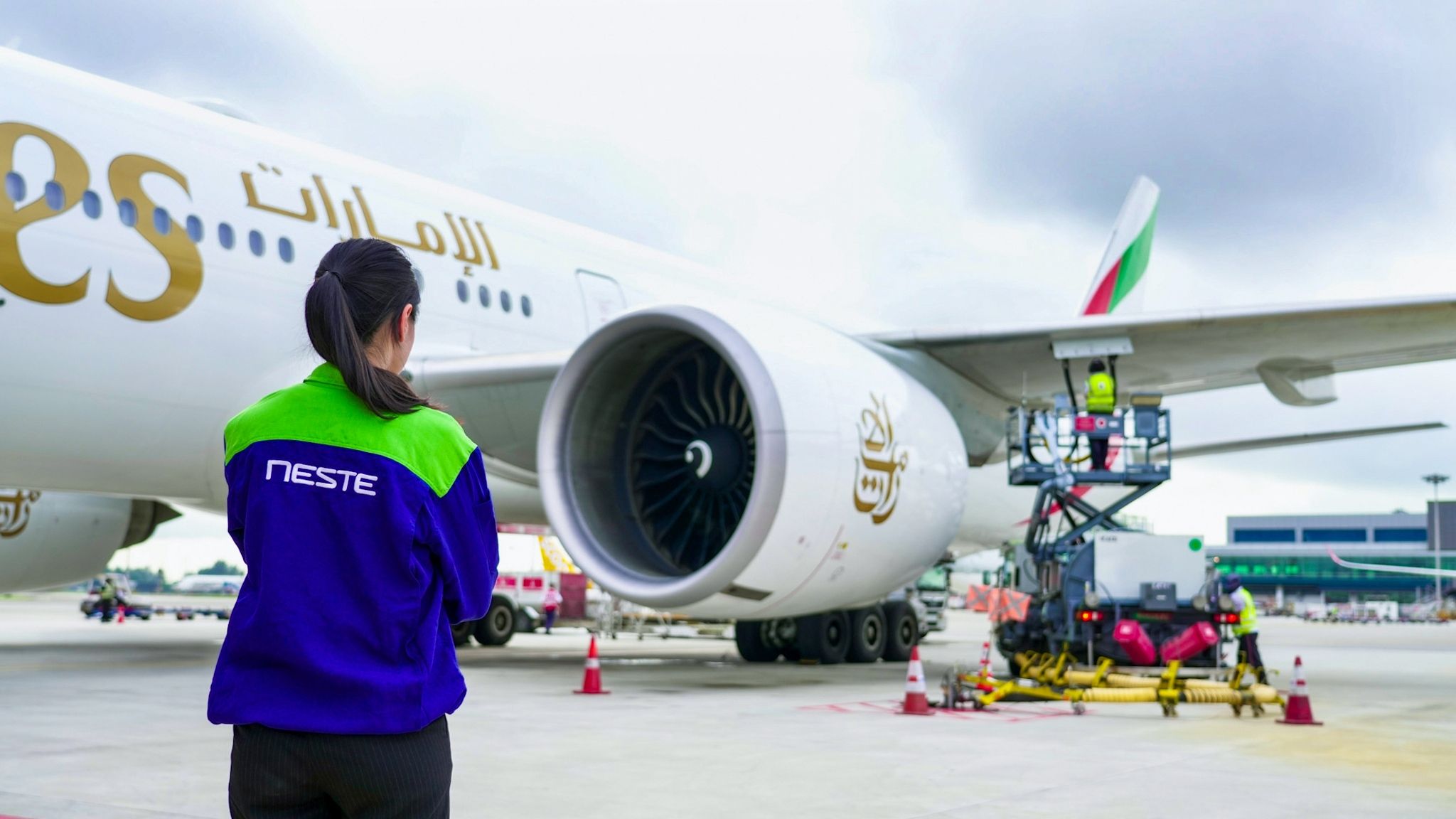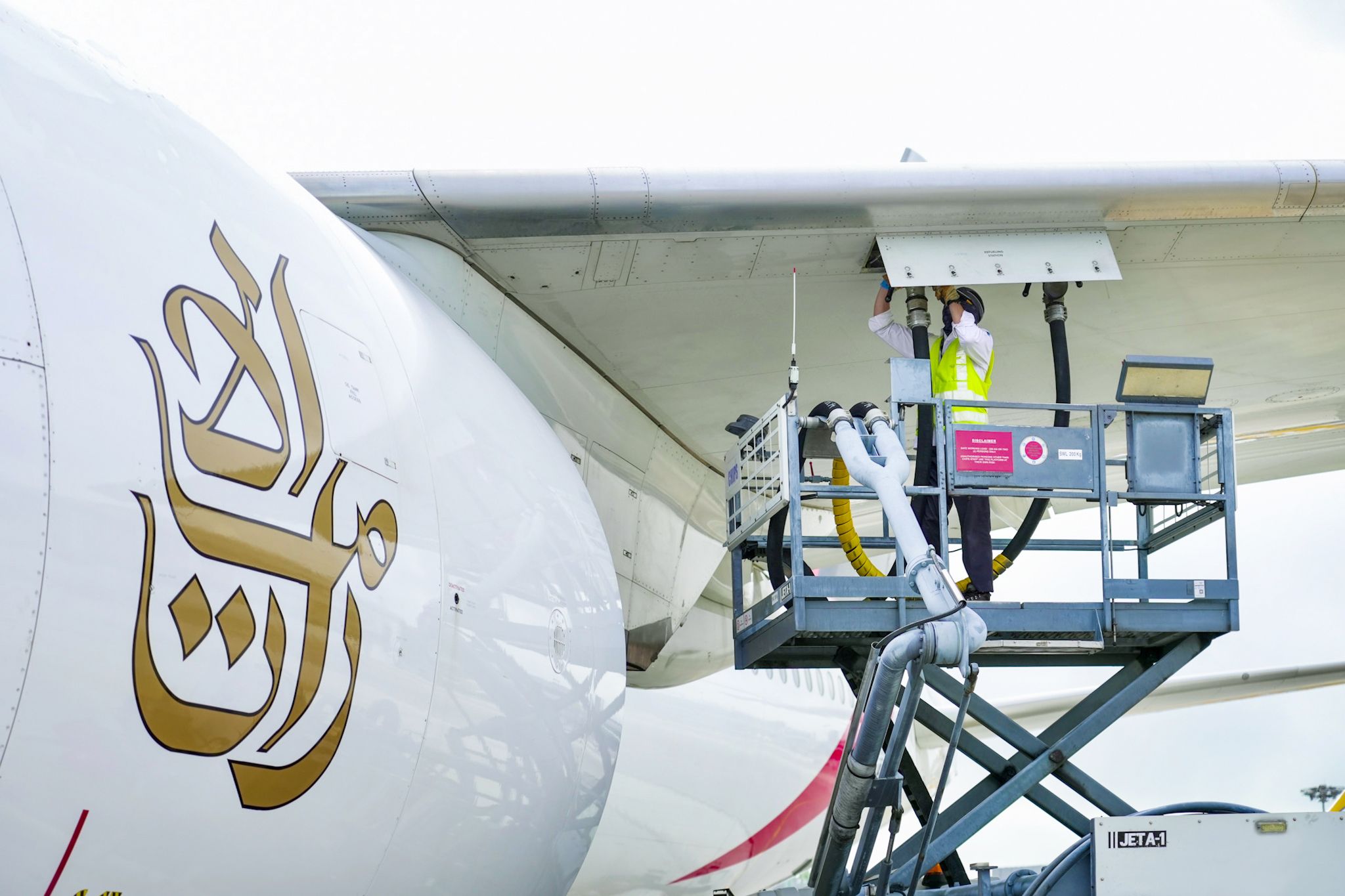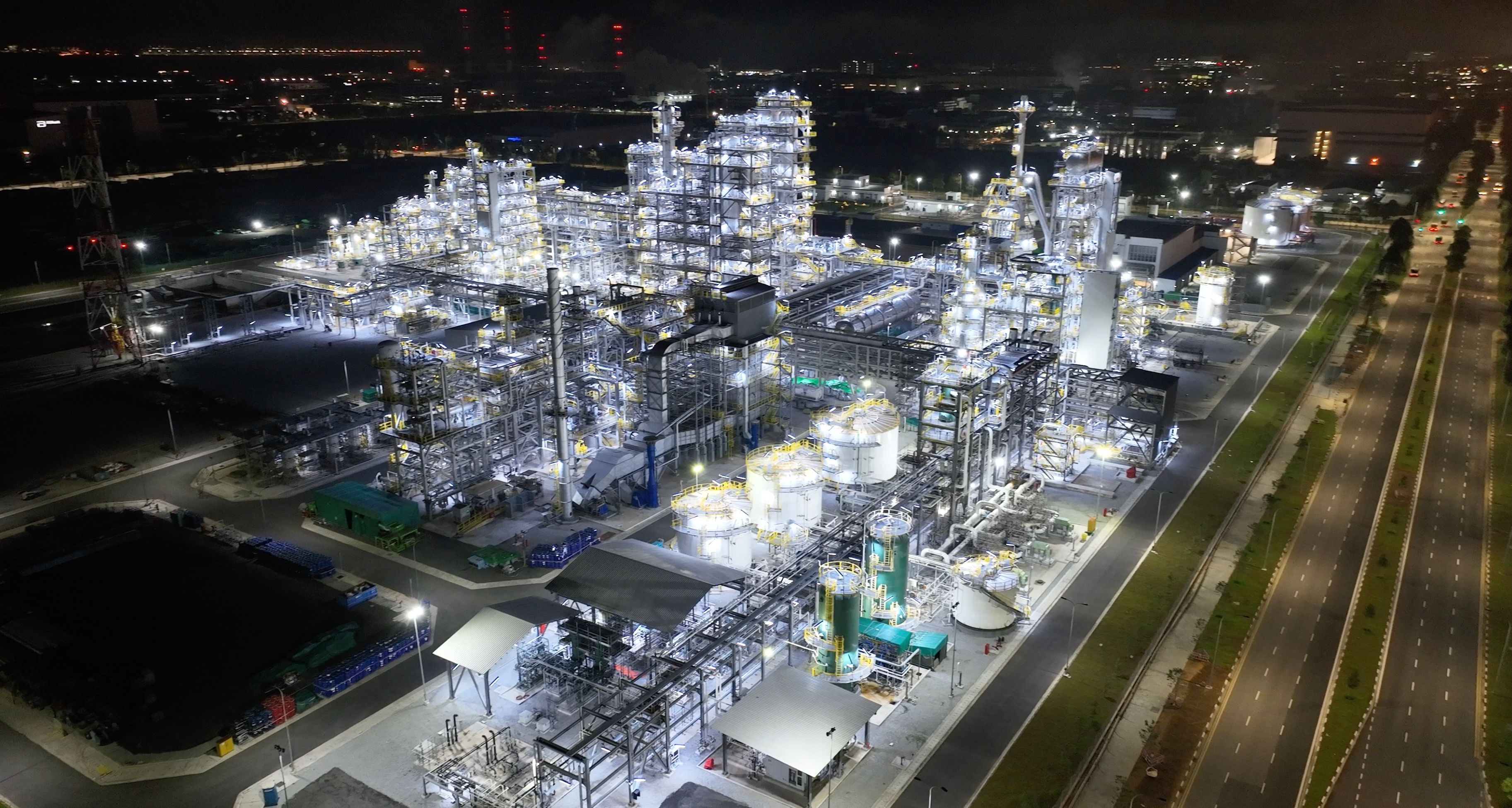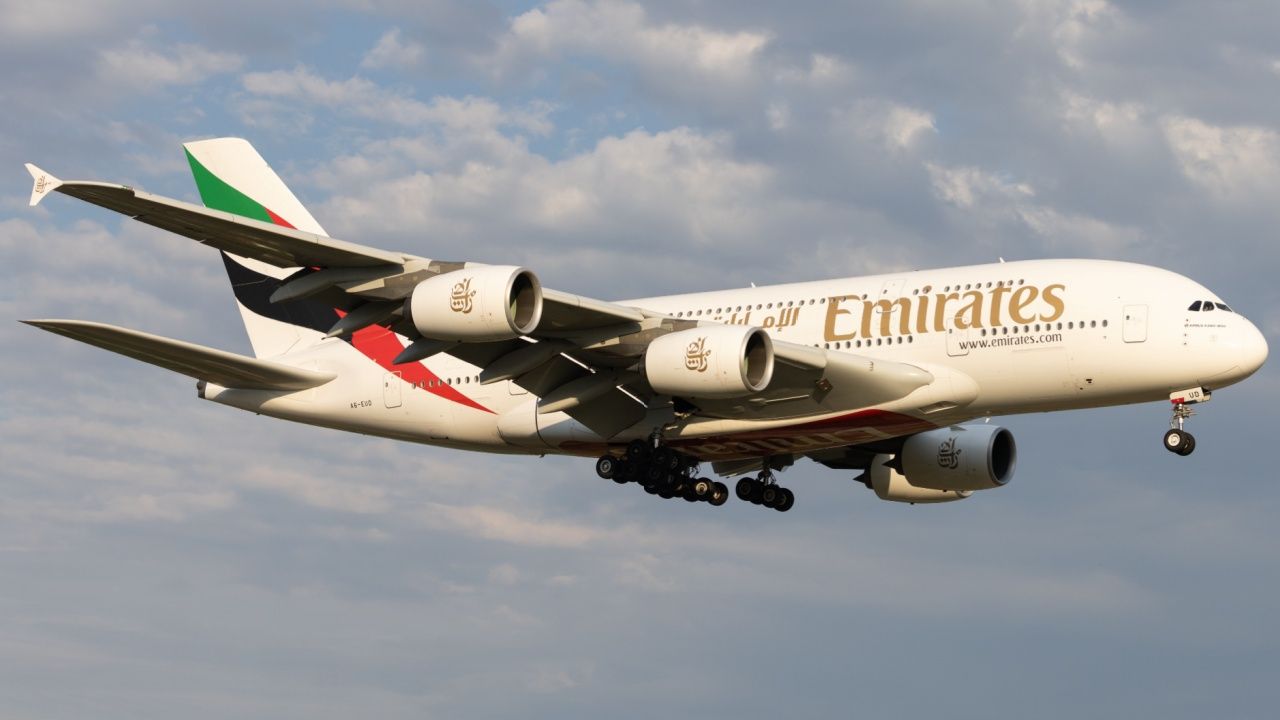Summary
- We need more sustainable aviation fuel (SAF) to make a real impact on reducing carbon emissions in the aviation industry.
- Emirates is leading the way in SAF adoption, integrating millions of liters of blended SAF into its operations at international hubs.
- The use of SAF from Neste at Changi Airport marks a significant milestone in Emirates’ SAF journey, with plans for further expansion.
I believe the picture above is a cause for celebration. It shows an Emirates long-haul aircraft being refueled with locally produced sustainable aviation fuel (SAF) while transiting through Singapore Changi Airport using the airport’s standard fuel system, proving that SAF is a 100% viable solution for aviation to reduce carbon emissions.
We just need more SAF
In other words, we know how to make SAF, blend it with Jet Fuel, transport it and get it on an aircraft at a busy international hub, but we don’t have enough to make an impact. For now, Emirates announced today it has begun using SAF as part of its fuel agreement with Neste on flights departing from Singapore Changi Airport, marking the airline’s inaugural SAF investment in Asia.
Photo: Emirates
Emirates said that over the last few weeks, approximately 3.3 million liters of blended SAF have been integrated into Singapore Changi Airport’s fueling system. This complements an agreement with Neste earlier this year, which resulted in the supply of 2.6 million liters of neat SAF into the fueling systems at Amsterdam Schiphol Airport.
Image: Neste
With its vast international network and fleet of long-haul aircraft, Emirates is setting up SAF supply worldwide. It currently operates flights from Amsterdam, London Heathrow, Paris, Lyon and Oslo with SAF and, late last year, integrated SAF into the fueling systems at its Dubai hub.
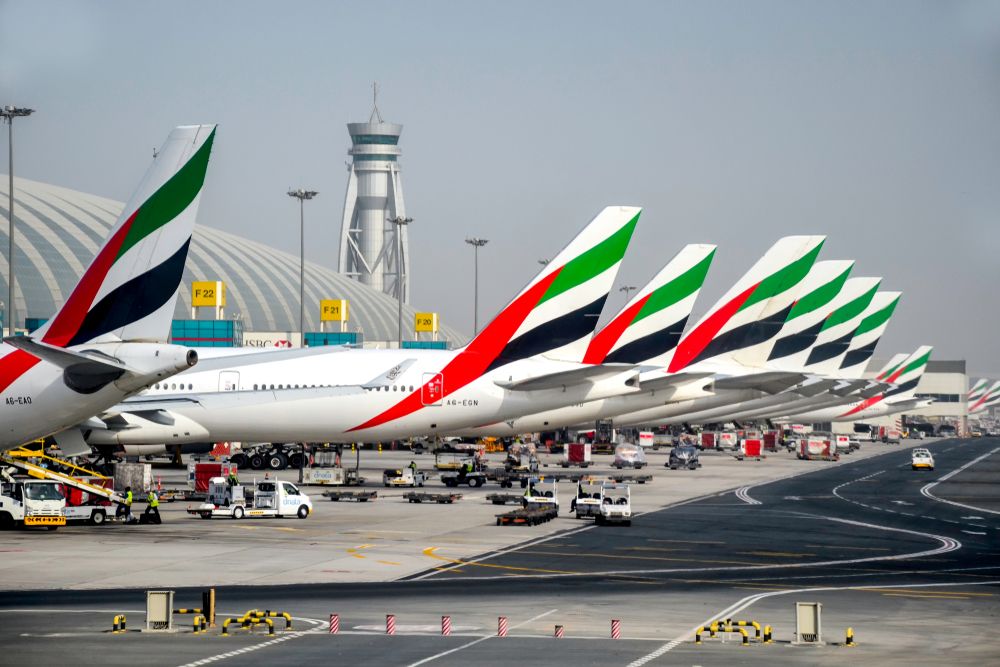
Related
Emirates Signs 300,000 Gallon SAF Deal For Use At Dubai International Airport
The Middle Eastern carrier is taking steps today to decrease its carbon footprint tomorrow.
The carrier is tracking the delivery of SAF into the fueling systems, accounting for and assigning its environmental benefits through widely used and accepted industry methodologies. Deputy President and Chief Operating Officer Adel Al Redha said Emirates’ investment into Neste-produced SAF in Singapore marks a first step forward in its SAF adoption in Asia, a region primed to become a leading supplier of SAF.
“While the activation of this agreement marks a milestone in our SAF journey in a new region, there’s still a lot of work to do. As we procure SAF for the short-term, we’ve got our sights set on longer-term agreements to help scale up a steady supply of SAF for Emirates’ operations.”
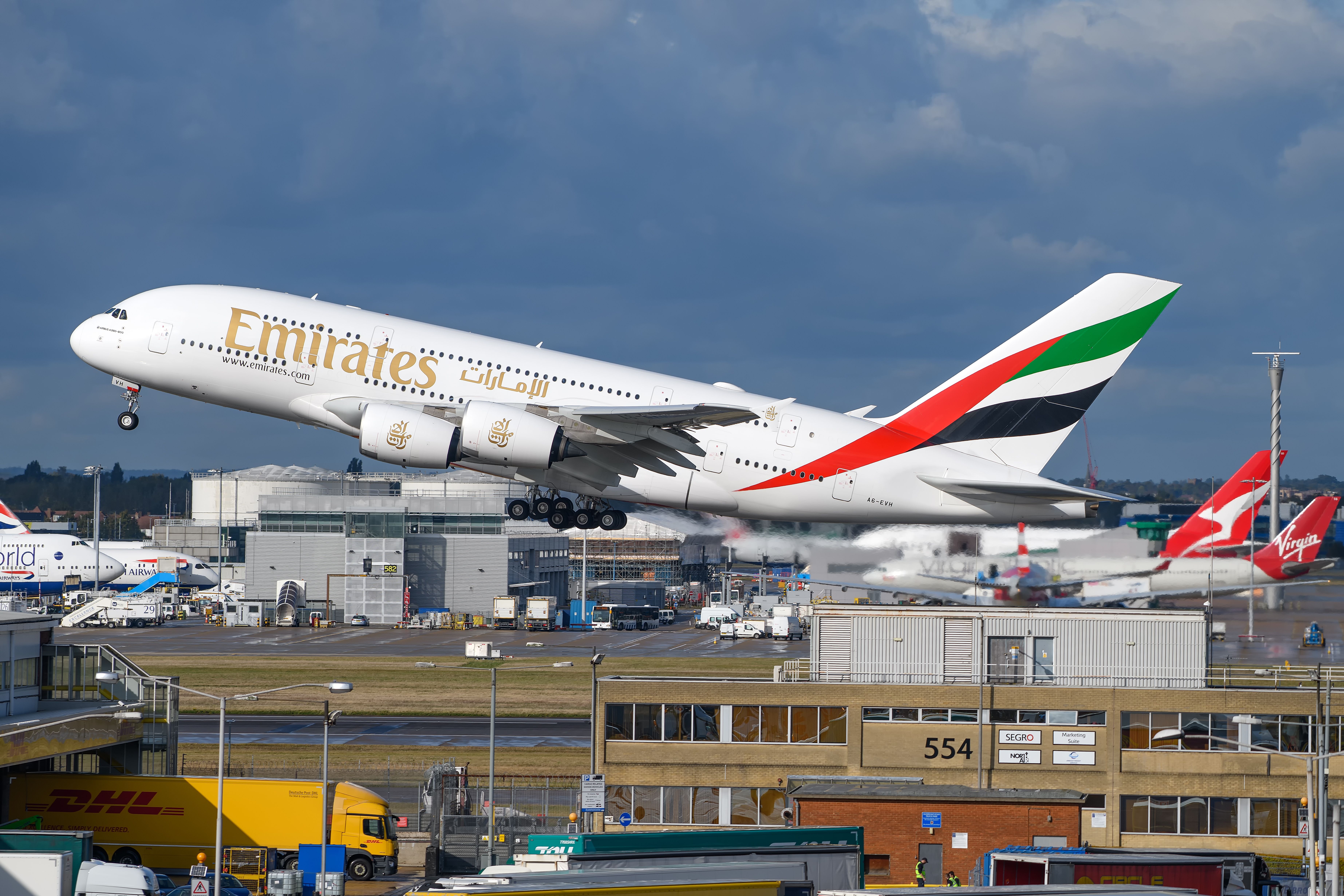
Related
Emirates Begins Operating With Sustainable Aviation Fuel At London Heathrow
This is the latest in a series of other SAF-related investments by Emirates.
Emirates is driving SAF adoption
Emirates is the first international visiting carrier using Neste-produced SAF at Changi Airport as part of its multi-faceted SAF strategy. The airline is looking for opportunities to use SAF operationally and to share emissions reductions with corporate customers or freight forwarders. It also cooperates on longer-term SAF projects with reputable partners and supports SAF ventures in the United Arab Emirates, which have the potential to supply sustainable aviation fuel at its hub.
Photo: Kevin Hackert l Shutterstock
Last year, Emirates was the first airline to operate two landmark demonstration flights from Dubai on a Boeing 777 and Airbus A380 with 100% SAF in one engine. This project was done in cooperation with Neste and other partners to support the certification of 100% SAF as a drop in fuel for commercial airliners, given that it is currently only certified for blends of up to 50% with conventional jet fuel.
The Neste SAF is produced from sustainably sourced and 100% renewable waste and residue raw materials, including used cooking oil and animal fat waste. It can be safely used in existing Emirates aircraft and airport refueling infrastructure and, in neat form, reduces lifestyle CO2 emissions by up to 80% compared to conventional jet fuel.
Do you think this is a positive step forward for aviation? Let us know in the comments.

